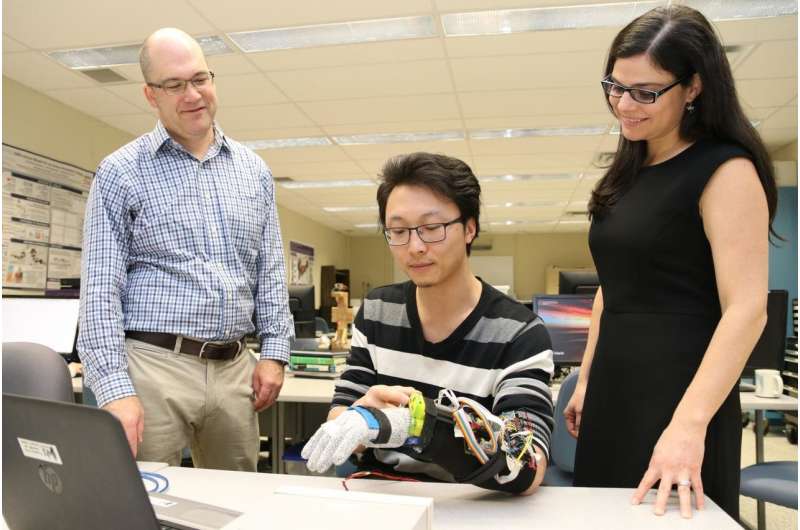New wearable tech from Western may hold big benefits for people with Parkinson's

A new prototype for wearable tremor suppression gloves has a team of Western University researchers believing real change is on the way for the more than 6 million people in the world afflicted by Parkinson's disease.
Ana Luisa Trejos, an Electrical and Computer Engineering professor at Western, and members of her Wearable Biomechatronics Laboratory Group have developed a novel approach for designing wearable technology that allows those with Parkinson's to exhibit improved motor control while reducing or even restricting involuntary muscle contractions commonly associated with the long-term and degenerative neurological disorder. More than 25 per cent of people with Parkinson's disease have an associated action tremor.
Previous studies from Trejos and her team show suppression devices targeting elbows or wrists often produce exaggerated tremors in the fingers, which causes even more difficulty for those with Parkinson's.
" If you have seen anybody with Parkinson's that has tremors, they have them in their entire body but it's the ones in their fingers that really prevent them from performing the activities of daily living," explains Trejos, also a key investigator at Western's Bone and Joint Institute.
Instead of suppressing tremors, which is what most other tremor suppression devices do, these new personalized gloves actually track voluntary movement so if a person is trying to accomplish a particular task, the glove allows the action to happen while minimizing the tremor.
"Our gloves don't suppress all movements, which is what most other wearable tech systems do," says Trejos. "They are either suppressing or not suppressing movement so when a person is trying to perform a specific task, the devices actually prevent them from performing the action they are trying to perform. They have to act against it. Our gloves actually allow the voluntary movement to happen and at the same time, prevent the tremor from occurring."
The new gloves will be custom designed for both hands of each patient to maximize the benefits of the wearable technology. The prototype was created specifically for the left hand of Western doctoral student Yue Zhou, who 3D-printed its key components. Mary Jenkins from Western's Schulich School of Medicine & Dentistry and Michael Naish from Mechanical and Materials Engineering at Western also collaborated on the project.
"While collecting data, we have seen first-hand that people with Parkinson's get really frustrated when they can't do something on their own and I feel our glove will allow them to get back to their daily living," says Trejos. "It can be very frustrating to not be able to eat or button a shirt on your own. Or even draw. Things we take for granted. By creating a glove that allows people to perform these actions while suppressing the tremors, I think they could go back to being much more independent in their own homes for a far longer period of time."



















